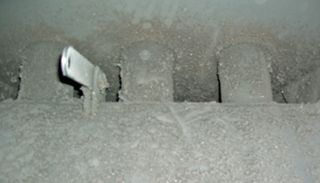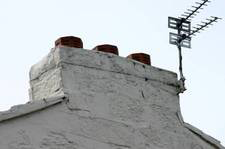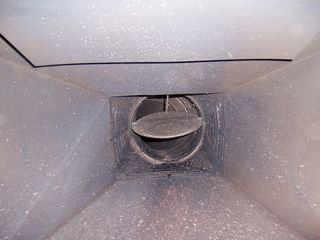by blogediter | May 9, 2018 | Save Energy
Here is an excerpt from a blog on phantom power usage at www.treehugger.com. Phantom power usage is an increasing waste of power from unused household stuff that drains power
Below is an excerpt from what the article is about:
“Call it what you will: phantom load, idle current, vampire power, wall wart; they’re all euphemisms for the way devices use and waste electricity when they aren’t even on, and they’re everywhere. Here are some ways to save some bucks and carbon emissions and gain some peace of mind by eliminating unnecessary power use in your home.”
read the entire entry here: http://www.treehugger.com/files/2006/12/cut_back_on_pha.php
by blogediter | May 7, 2018 | Chimney Plugs
Q: Jason – I bought a Fireplace Chimney Creosote Sweep Log. You burn it like another log and it is supposed to release fumes to loosen creosote in the chimney. Do those things really work? – FW
A: It would be unfair to say that the chimney sweep type logs make no difference in your fireplace chimney. They, in fact, make such a small difference that it is almost imperceivable. But they do have a very effective marketing strategy. I don’t recommend them as maintenance items for fireplace chimneys. The chimneysweep type logs tend to give a homeowner a false sense of proper maintenance on sweeping their chimney. Nothing beats a good old brush scrubbing and inspection. – Jason

by blogediter | May 4, 2018 | Chimney Plugs
Heatilator
Q: Hi, I stumbled across your site today, and I am very interested in one of your Chimney Balloons. I have a question. My chimney has a system to take cold air off the floor in front of the hearth, and draw it through some pipes that run through the flue. This warm air is then fan forced out above the fireplace. The question is whether your Chimney Balloon will go between these pipes and the damper, or squeeze through between the pipes, and be inflated above them. I can take a digital picture and send or maybe take some measurements and send those… – CF
A: CF, Most people refer to those systems as heatilators (but that is a brand name.) A deflated Chimney Balloon needs a gap of 2″ to 2.5″ to fit through. Once you are through these pipes you should be good to go. I would suggest using a folding carpenters ruler to measure above the pipes so you can tell how large a Chimney Balloon you need. You may need to consider an extension for your Chimney Balloon if you plan on reaching very far past the heatilator pipes to inflate the Chimney Balloon. The Handle/valve Extender kit (HEK) will give you an extra 16″ of reach to add to your 12″ Chimney Balloon handle. You can see those extenders on the Buy Chimney Balloon page.
Below is an image of one and this is a link to the Chimney Balloon Blog entry on how to use the HEK Extender. http://www.chimneyballoonusa.com/blog/using_a_hek_extender/index.html

by blogediter | May 2, 2018 | Fireplaces
Three Chimneys
Q: Jason – I have two fireplaces in my home, one in the living room and one in the basement. When I light one fireplace the other one gets smoky. My fireplace shop said to crack a window so this wouldn’t happen, but it is -1 degrees F out, who wants to open a window when it is so cold?! Why would that help keep the smoke out? – KM
A: KM – You are experiencing a very common problem among new homes with multiple fireplaces. Let’s look at this in sections
1) Your fireplace sucks air when lit.
When you light one fireplace that fire starts drawing air from the rest of the house like a vacuum for the combustion process. To replace that air the house will start drawing in outside air through the path of least resistance in order to equalize the pressure. This is called the “stack effect”. Your home could draw this air through worn weatherstripping, power outlets on outside walls, cracks, under insulated windows, or many other ways. One of the weakest points in a homes air envelope seal is the metal fireplace damper. In you case your home is pretty tight but your fireplace damper is the path of least resistance for cold air to gain entry. See the image below of 3 chimneys that are too close together, they may draw smoke from each other.
2) Your fireplace damper is weak and is the easiest way for cold outside air to gain entrance.
When the air is drawn down the chimney to equalize the pressure in your home it also draws down the smoke that is wafting around your roof. This is why your basement gets smoky.
3) Seal your basement damper.
If you seal up the basement damper and flue with a Chimney Balloon it will then be air tight and will not draw in smoke.
4) Your home cannot be a vacuum.
When you burn in your fireplace your home will continue to draw in air from the outside. It just wont be drawing smoky air from your roof. But it will draw from somewhere. That is why burning in your fireplace does not save you on heat, it actually costs you heat in most situations.

by blogediter | Apr 30, 2018 | Chimney Plugs
Flue Walls Slant
Q: Inside my fireplace, about 29″ up from above the opening is the damper. Just below the damper and each of the four sides or slit type openings. I do not know why. Maybe for air? I just saw the picture from SH and that is what mine likes like except all 4 sides slant in. It is about 10×10 at the damper. – KT
A: Dear KT, Since the sides slant on all 4 sides we will have to do the install high or low. We can use a HEK extender and a small 12×12 Chimney Balloon to install above the damper, or we can use the ledge that is generally just on the lintel and install a larger 36×15 Chimney Balloon. The lower install is easier but the balloon may be slightly visible from the room. _ Jason


